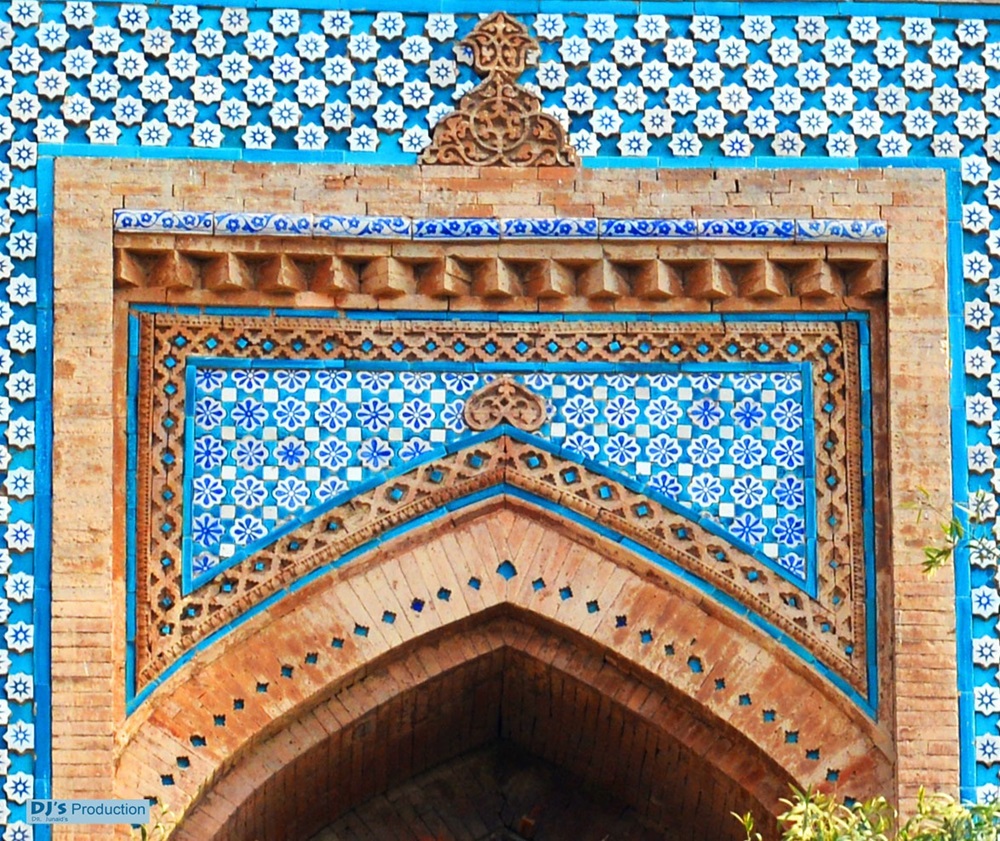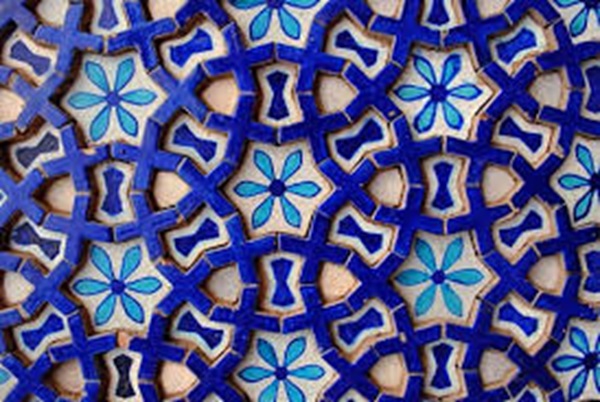Written by: Anum Zaeem
Posted on: April 23, 2025 |  | 中文
| 中文
Detailed view of the Tomb of Shah Rukn-e-Alam, showing the exquisite blue tile work, geometric patterns, and smaller domes.
The magnificent Tomb of Shah Rukn-e-Alam stands as a crown jewel of Multan, Pakistan, drawing visitors from across the globe with its imposing structure and historical significance. This architectural marvel, built in the early 14th century, represents one of the finest examples of Tughlaq architecture and serves as a testament to the rich cultural heritage of South Asia.
Perched atop one of Multan's highest plateaus, the mausoleum was constructed between 1320 and 1324 AD for Sheikh Rukn-ud-Din Abul Fateh, commonly known as Shah Rukn-e-Alam. He was a revered Sufi saint of the Suhrawardiyya order and the grandson of another famous saint, Sheikh Baha-ud-din Zakariya. The tomb was initially commissioned by the Sultan of Delhi, Ghiyas-ud-din Tughlaq, as his own final resting place. However, it was later given to house the remains of the beloved Sufi saint, demonstrating the immense respect and reverence held for Shah Rukn-e-Alam.
What makes this mausoleum truly exceptional is its distinctive octagonal design. Rising to a height of approximately 100 feet, with walls that are 41 feet thick at the base, the structure projects an aura of permanence and stability. The building's exterior is adorned with intricate red brick masonry, while the interior features elaborate glazed blue tiles, a signature element of Multan's architectural style.
The tomb's octagonal base transitions into a smaller octagon at the second level, which is then crowned by a hemispherical dome. This architectural progression creates a visually striking silhouette that dominates Multan's skyline. Three arched openings on each of the eight sides provide entry into the inner sanctum, where elaborate decorative elements await the visitor.

An arched entrance at the Tomb of Shah Rukn-e-Alam, featuring vibrant blue and white floral tile patterns contrasting with terracotta brickwork.
Inside the mausoleum, visitors are greeted by breathtaking artistry. The interior walls are embellished with geometric patterns, floral motifs, and Quranic calligraphy executed in blue, white and azure tiles. The interplay of light filtering through the arched openings creates an almost mystical atmosphere, enhancing the spiritual experience for pilgrims and tourists alike.
The wooden elements of the tomb, including the massive main door, feature intricate carvings that have remarkably survived the centuries. These wooden components are crafted from deodar, a type of cedar known for its durability and resistance to decay, brought from the distant hills of Kashmir.

Stunning geometric tilework from the Tomb of Shah Rukn-e-Alam, featuring intricate blue, turquoise and white star patterns.
For Muslims, particularly followers of the Sufi tradition, the tomb represents more than just architectural achievement. It serves as an important pilgrimage site where devotees come to pay homage to Shah Rukn-e-Alam, seeking blessings and spiritual connection. The annual Urs celebration (death anniversary) of the saint draws thousands of pilgrims who participate in devotional singing, prayer and distribution of food to the poor.
The cultural and historical importance of this monument was formally recognized when it was included in UNESCO's Tentative List of World Heritage Sites. This recognition has helped increase international awareness about the site and contributed to conservation efforts aimed at preserving this architectural treasure for future generations.
Today's visitors to the tomb can experience a fascinating blend of history, architecture and spirituality. The best time to visit is during the cooler months from October to March when the weather is pleasant. Early mornings and late afternoons offer optimal lighting conditions for photography enthusiasts, seeking to capture the tomb's majestic presence.
Access to the tomb involves climbing several steps, but the panoramic view of Multan city from the elevated location makes the effort worthwhile. Local guides are available to share detailed stories about the saint's life and the tomb's construction, enriching the visitor experience with its cultural context.
Despite its cultural significance, the Tomb of Shah Rukn-e-Alam faces conservation challenges from environmental factors, urbanization and the sheer number of visitors. Recent restoration efforts have focused on strengthening the structure while preserving its authentic character and protecting the delicate tile work that makes this monument unique.
The Tomb of Shah Rukn-e-Alam stands not only as an architectural masterpiece but also as a symbol of Pakistan's rich cultural heritage. Its enduring presence has witnessed centuries of history, serving as a bridge between past and present. For travelers seeking authentic cultural experiences, this magnificent mausoleum offers a glimpse into the artistic achievements, spiritual traditions, and historical narratives that have shaped the region. A visit to this remarkable monument promises an unforgettable journey through time, art and devotion.
You may also like: